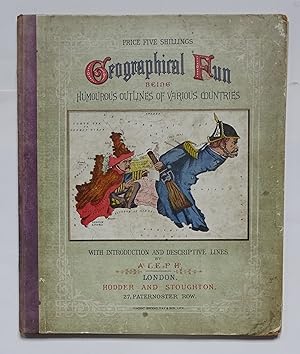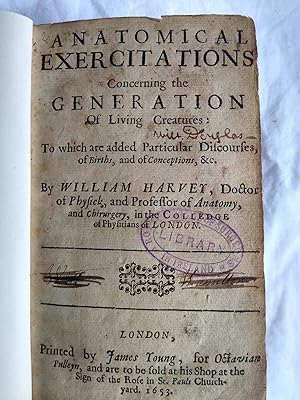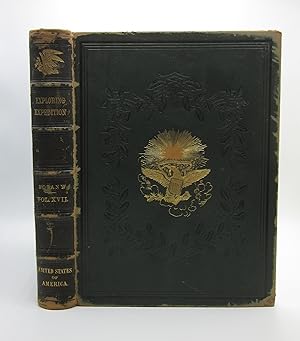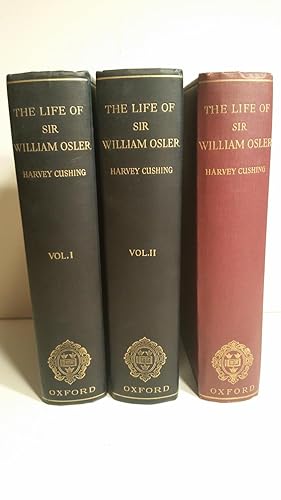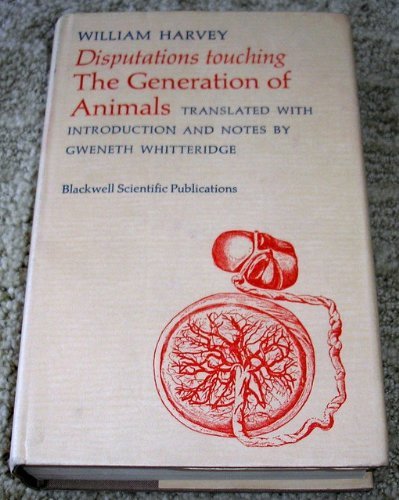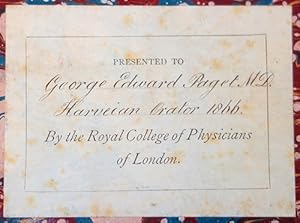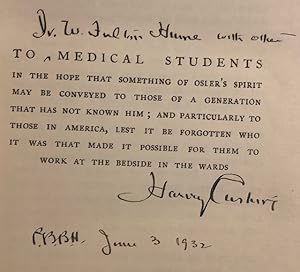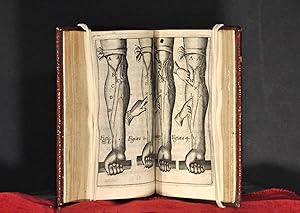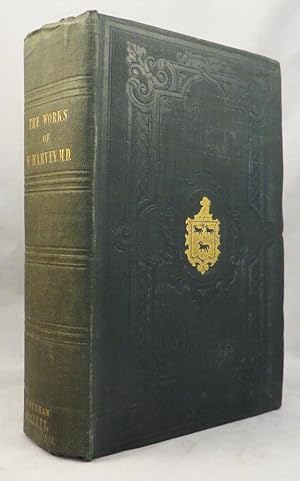william harvey (Oltre 6.800 risultati)
Tipo di articolo
- Tutti gli articoli
- Libri (6.754)
- Riviste e Giornali (36)
- Fumetti (5)
- Spartiti (2)
- Arte, Stampe e Poster (12)
- Fotografie (12)
- Mappe (9)
-
Manoscritti e
Collezionismo cartaceo (57)
Condizioni
Legatura
Ulteriori caratteristiche
- Prima edizione (585)
- Copia autografata (35)
- Sovraccoperta (299)
- Con foto (2.238)
- No print on demand (5.240)
Spedizione gratuita
Paese del venditore
Valutazione venditore
-
The Anatomical Exercises of Dr. William Harvey, Professor of Physick, and Physician to the Kings Majesty, Concerning the motion of the Heart and Blood. With the preface of Zachariah Wood Physician of Roterdam. To which is added Dr. James De Back his discourse of the Heart, Physician in ordinary to the Town of Roterdam
Editore: Printed by Francis Leach, London, 1653
Prima edizione
First edition. FIRST EDITION IN ENGLISH OF DE MOTU CORDIS. First edition in English of De motu cordis (1628), in which was described the discovery and proof of the circulation of the blood; this is the very rare first issue with uncancelled title and this leaf unclipped by the printer (see below). Harvey's discovery and experimental proof of the circulation of the blood created a revolution in physiology comparable to the Copernican revolution in astronomy: it was to become "the cornerstone of modern physiology and medicine" (Garrison-Morton). De motu cordis "is probably the most important book in the history of medicine. What Vesalius was to anatomy, Harvey was to physiology; the whole scientific outlook on the human body was transformed, and behind almost every important medical advance in modern times lies the work of Harvey" (Heirs of Hippocrates). It should also be regarded as "the first record of a complete biological investigation, giving a clear and accurate description of the methods employed to recognise the laws governing an important vital process, a knowledge of which had till then been befogged by mistaken conceptions" (H.P. Bayon in Keynes). This first English edition is, according to Keynes, translated from the Rotterdam edition (1648), and like that edition includes (in translation) the additional commentaries by Zachariah Wood, James De Back's Dissertatio de corde (first published in Latin at Rotterdam in 1648), and Harvey's own Exercitatio anatomica de circulatione sanguinis (first published in Latin at Cambridge in 1649), consisting of two essays addressed to Jean Riolan, the younger, in response to Riolan's Encheridium anatomicum, et pathologicum (1648). "Riolan admitted that some vivisectional evidence seems to support the general, rapid Harveian circulation; but he maintained that under normal physiological conditions the movements of the blood are much more tranquil than those observed in vivisection" (DSB). In his reply, Harvey provided further experimental proof of the circulation of the blood. "In [De circulatione sanguinis] Harvey first described the circulation of blood through the coronary arteries. Harvey also described experiments that he made to provide further support to his theory of the circulation. Published simultaneously by Daniel in Cambridge and Arnold Leers in Rotterdam" (Garrison-Morton). More recently, however, John Stuart White has argued forcefully that this English edition is not, in fact, a translation at all but is actually a printed version of Harvey's original manuscript of De motu cordis which, he maintains, was first written in English and then translated by Harvey into Latin. This is course adds a great deal of interest to this edition. Almost all copies of this edition are of the second issue with a cancel title. In the only copies of the first issue seen by Keynes a triangular piece had been clipped from the bottom outer corner of the title - directing the binder to replace it with the new title -with the consequent removal of the date of publication: Keynes's dating of the first issue is therefore conjectural, expressed as [?1653]. The pagination errors noted by Keynes are present in this copy, but with the following differences: in the first part page 5 is correctly printed, the numerals for pages 9 and 44 are inverted and page 46 is printed as 64; in the second part, page 105 is printed as 015; in the third, the numbering for pages 12 and 13 is transposed. No copies of this first issue listed on ABPC/RBH. Provenance: Thomas Vyner (d. 1673) of Eathorpe Hall, Warwickshire (eighteenth-century bookplate). He was educated at St. Catherine's College, Cambridge, and awarded the BA in 1650, MA in 1653, BD in 1662 and DD in 1671. Small marginal note in a seventeenth-century hand on one leaf. "William Harvey was born in Folkestone, Kent in 1578; he was schooled at King's School Canterbury then Gonville and Cauius College Cambridge. However, arguably it was his subsequent medical schooling at Padua, and resultant exposure to the anatomical research and methods of his Paduan predecessor Vesalius and his teacher Fabricius, that was most instrumental in his medical development. The University of Padua was a popular destination for many English medical students at the turn of the seventeenth century owing to its esteemed teaching staff and improved opportunity, in comparison with Oxford and Cambridge, for taking part in anatomical dissection. However, not all anatomy instruction at Padua followed the same approach. Vesalius had advocated a very novel empirical model urging students to become involved in dissection and 'feel with [their] own hands and trust them'. Conversely, Harvey's tutor Fabricius taught anatomy from an Aristotelian natural philosophical standpoint rather than a structural one - so advocated a less 'hands-on' approach, discouraging direct participation. Consequently Harvey was educated in an environment where there was a tension between describing anatomy structurally, using an empirical approach, and teaching anatomy from a broader Aristotelian philosophical standpoint, explaining units of anatomy in isolation. Arguably this legacy of two alternative approaches can be seen in De motu cordis. While in practice, Harvey carried out experiments on the heart, taking measurements and 'feel[ing] with his own hands' in the Vesalian tradition, he remained very deferential towards the ideas of Galen and particularly Aristotle throughout - even describing his enquiry as philosophical rather than medical" (Glasgow University Library Special Collections Department Book of the Month, June 2007). "Galen had regarded the veins as serving to convey to all parts of the body the nourishing blood elaborated in the liver. He recognized that both veins and arteries contained blood, and assumed that the arterial blood - clearly differentiable from the venous blood by its colour - was replenished where necessary from the venous supply through the septum of the he.
-
De Motu Cordis.
Editore: Joannis Maire, 1639
Da: Sokol Books Ltd. ABA ILAB, London, Regno Unito
Libro
Hardcover. Condizione: Good. Sm. 4to. pp (viii) 267 (i), 84 (iv), the last misplaced between pp. 82 & 83 (as often). Roman and Italic letter, printer s device on t-p. prelims include two full page plates of experiments with blood circulation in the arms, very clean in excellent impression. Intermittent paper browning as usual, spotting towards end of both parts, large red armorial stamp on blank verso of t-p and lower margin of last, early ms case mark on fly. An unusually good, crisp well margined copy in probably contemporary vellum, sometime cleaned, original eps. Nominally the third edition of Harvey s great work probably the most important book in the history of medicine (Heirs of Hippocrates 256) however only the second of the complete text. The second edition (1635) omitted parts of the introduction and chapters one and sixteen of the text. Harvey (1578-1657) read medicine at Cambridge and Padua, where he was a pupil of Fabricius, was a fellow of the Royal College of Physicians, Physician-in-charge at St. Bartholomew s Hospital, from 1615 Lumleian Lecturer and subsequently physician to King James I, Charles I and notables such as Francis Bacon. He was the most important medical figure in England of his day. But his fame rests on the publication in 1628 of this small work, describing accurately for the first time, the circulation of the entire system of the blood. The scientifical outlook on the human body was transformed and behind almost every medical advance of modern times lies the work of Harvey (Heirs of Hippocrates cit.sup). DSB vol.6 pg. 151 adds By this discovery he revolutionised physiological thought Beyond this, he inspired a whole new generation of anatomists who sought to emulate his methods in the study of animal functions. And, more generally still, his work was one of the major triumphs of early modern science, and thus helped to generate the enthusiasm for science that came to dominate European intellectual life during the second half of the seventeenth century. Harvey s discovery of the functions of the circulation even now remains the cornerstone of modern physiology and medicine. Like the first, this edition is printed on indifferent paper and often with binding errors. Here however, Harvey s text is printed passage by passage alternately with his refutation of Parisano while the criticisms and refutations of Primrose constitute the separate second text. It is also the earliest complete edition obtainable. The last first we could find at auction, nearly twenty years ago, sold for approximately three quarters of a million US$. Wellcome I 3070. Garrison & Morton 759 the most important book in the history of medicine (of the 1st). Printing and The Mind of Man 127 (1st).
-
ONE OF THE RAREST SIGNATURES IN ALL OF SCIENCE! -- SIR WILLIAM HARVEY -- SIGNS A DEED OF TRUST FOR THE TRANSFER OF LAND HOLDINGS CALLED 'BARON PARKE'
Data di pubblicazione: 1651
Da: Gerard A.J. Stodolski, Inc. Autographs, Bedford, NH, U.S.A.
Manoscritto / Collezionismo cartaceo
No Binding. Condizione: Fine. HARVEY, WILLIAM (1578-1657) English Physician; made influential contributions in anatomy and physiology; was the first known physician to describe completely, and in detail, the systemic circulation and properties of blood being pumped to the brain and the rest of the body by the heart. An impressive, and excessively rare Manuscript Document Signed, ''Will Harvey''. Additionally signed by: 'Edward Dering'; 'Heneage Finch'; [Heneage Finch, 1st Earl of Nottingham (1621-1682) Lord Chancellor of England, Solicitor General and member of the Convention Parliament of April 1660]; 'Eliab. Harvey', [Elizabeth Harvey, wife of Sir William Harvey]; 'Jno Prestwoode'; and 'Henry Pratt'. One page, jumbo folio, vellum. 509 x 755 mm. July 10, 1651. Six wax seals fully intact. 58 lines total. Docketing on verso: 'Declaration of trust for Baron Parke.' The document is a land trust indenture between William Harvey: Doctor of Phisick, Sr. Edward Dering Heneage Finch Elab Harvey, and Henry Pratt [make an] assignment [of] all that park of Baron comonly [sic] called Baron Parke in the said county of Liecester Following a medical education at the University of Padua, William Harvey returned to England, serving at a doctor at St. Bartholomew s Hospital and as a Fellow of the Royal Society. Following his discovery of the circulatory system in 1616, Harvey published An Anatomical Exercise on the Motion of the Heart and Blood in Animals (1628). This groundbreaking work diverged greatly from an accepted model that dated to Galen. Instead of following a model that identified two types of blood, venous and arterial, Harvey, building a careful scientific base, argued for the idea that blood was pumped around the body by the heart before being returning to the heart and being recirculated once again. Despite opposition and attacks, Harvey s groundbreaking ideas were eventually accepted before his death. Even in the face of such controversy, Harvey served as personal physician to King James I and King Charles and also was the Lumleian lecturer at the Royal College of Physicians. A fabulous and excessively-rare document containing a most remarkable assemblage of signatures from the 17th Century! We were the original discoverer of the document, found in a ''Armada Chest'', hidden and largely forgotten, in a stable of Harvey s distant heirs some 20 years ago. Harvey's autograph is excessively rare, with only a few examples appearing on the market, in the last 100 years. This is a unique opportunity to acquire a scientific autograph many times rarer that Newton's, and on a near par with Galileo's.
-
DE MOTU CORDIS ET SANGUINIS IN ANIMALIBUS, ANATOMICA EXERCITATIO. CUM REFUTATIONIBUS AEMYLII PARISANI
Editore: Johann Maire, Leyden, 1639
Da: Phillip J. Pirages Rare Books (ABAA), McMinnville, OR, U.S.A.
Third Edition. 198 x 145 mm. (7 1/2 x 5 3/4"). 2 p.l., 84, [2] leaves, 267 pp. (bound out of order but complete). VERY FINE CONTEMPORARY CALF, covers with double gilt fillet border, raised bands, spine compartments with floral lozenge at center (neat older repairs to joints). With two engraved plates showing veins in the arm. Two-inch repair to title page (not affecting text), perhaps to remove prior owner inscription. Keynes 3; Heirs of Hippocrates 417; Grolier Medicine 27 (1st ed.); NLM/Krivatsy 5329; Norman 1006 (1st ed.); Parkinson and Lumb 1147; PMM 127 (1st ed.); Waller 4089; Wellcome I, 3070. â A little spotting to boards, extremities a bit rubbed, two gatherings somewhat browned, occasional minor foxing, but AN OUTSTANDING CONTEMPORARY COPY, clean and fresh inside and out, THE PLATES ESPECIALLY BRIGHT, AND WITH RICH IMPRESSIONS. This is a remarkably attractive copy of the third (but second complete) edition of one of the most important medical books ever published. Containing Harvey's discovery and experimental proof of the circulation of the blood, this work quickly became, in the words of Garrison-Morton, "the cornerstone of modern physiology and medicine." Heirs of Hippocrates explains that "what Vesalius was to anatomy, Harvey was to physiology; the whole scientific outlook on the human body was transformed, and behind almost every important medical advance in modern times lies the work of Harvey." The work was first published in Frankfurt in 1628, with a second edition including the "Exercitationes" of Parisanus appearing in Venice in 1635; the first is practically unobtainable, while the second lacked the plates, parts of the introduction, and chapters I and XVI. For our third edition, the publisher Maire restored these parts, included the illustrations, and also added the criticism and denials from the 1630 printing of the "Animadversiones" of Harvey's leading opponent, James Primerose (usually found at the end of the book, though here mistakenly bound at the beginning). Harvey had studied with Fabricius of Aquapendente, who published a monograph on the valves of the veins upon which Harvey improved and expanded. According to PMM, "It was left for Harvey to combine these discoveries, to conceive the idea of a circulation of the entire blood system, and demonstrate it conclusively by an exhaustive series of dissections and physiological experiments. For twenty years Harvey pursued his objective in both human and comparative anatomy. He proved experimentally that the blood's motion is continuous and always in one direction, and that its actual amount and velocity makes it a physical impossibility for it to do otherwise than return to the heart by the venous route, the heart being itself a muscle and acting as a pump. . . . He even suspected the existence of the capillaries connecting the smallest arteries with the smallest veins, but without the microscope he could not see them . . . . The arguments and demonstrations marshaled by Harvey were too cogent to admit of long resistance, and his work was accepted by medical men in his lifetime. Descartes used the discovery as a basis for his mechanistic physiology; English experimental scientists regarded the discovery as of equal importance with Copernican astronomy or Galilean physics; [and] Lower supplemented Harvey's work by discovering the role of the lungs in supplying the arterial blood with air." Not at all a common book to begin with, this famous edition is exceptionally difficult to obtain in a contemporary copy as well preserved as the present one.
-
De Motu Cordis & sanguinis in animalibus, anatomica exercitatio. Cum refutationibus Aemylii Parisani, romani, philosophi, ac medici Veniti; et Jacobi Primrosii, in Londinensi collegio doctoris medici
Editore: Johann Maire, Leiden, 1639
Da: Hugues de Latude, Villefranche de Lauragais, Francia
Membro dell'associazione: ILAB
Prima edizione
*** Seconde édition complète du plus fameux ouvrage de l'histoire de la médecine. Illustré par 4 gravures sur cuivre sur 2 planches hors-texte. Cette édition contient les réfutations d'Emilio Parisano et de James Primrose. La première édition de 1628 est d'une insigne rareté; la suivante de 1635 est très incomplète, il y manque une partie de l'introduction, les chapitres un et seize, et elle n'est pas illustrée. Relié avec : - REGIUS, Henricus. Spongia qua eluuntur sordes Animadversionum, quas Jacobus Primirosius . adversus theses pro circulatione sanguinis in Academia Ultrajectina disputatas nuper edidit. Leiden, Ex officina Wilhelmi Christiani, Sumptibus Joannis Maire, 1640. In-4 de 31 pp. Première édition. Une défense de la théorie d'Harvey par Henricus Regius (ou Henri de Roy), professeur de médecine à Utrecht et disciple de Descartes. - PRIMEROSE, James. Antidotum adversus Henrici Regii Spongiam. Sive vindiciae animadversionum. Leiden, Johann Maire, 1644. In-4 de 51 pp. Première édition. La réponse de Primerose à l'ouvrage précédent. La préface a été reliée à la fin au milieu du cahier l, comme dans beaucoup d'exemplaires. Keynes 3. Reliure restaurée et discrètes restaurations aux coins des premiers feuillets, mais bel exemplaire. *** In-4 de (4), 267, (4) , 84, 31 pp., 2 planches h.-t. Veau, dos à nerfs orné, encadrements dorés sur les plats. (Reliure de l'époque.) - - - - - - - - - - - - - - - - - - - - - - - - - - - - - - - - - - - - - - - - - - - - - - - - - - - - - - - - - - - - - - - - - - - - * Second complete and illustrated edition of this landmark in the history of medicine. De motu cordis " is probably the most important book in the history of medicine . The first edition of Harvey's little book has become one of the greatest rarities. It was printed on poor paper and almost always badly bound. Even the later editions are scarce. Although this is actually the third edition of 'De motu cordis', it is only the second complete edition. The second edition of 1635 was lacking parts of the introduction, chapters One and Sixteen, and the plates. In this edition, the text of Harvey's treatise is printed passage by passage alternatively with the refutations of Emilio Parisano, one of Harvey's many opponents. Bound with : - REGIUS, Henricus. Spongia qua eluuntur sordes Animadversionum, quas Jacobus Primirosius . adversus theses pro circulatione sanguinis in Academia Ultrajectina disputatas nuper edidit. Leiden, Ex officina Wilhelmi Christiani, Sumptibus Joannis Maire, 1640. 31 pp. First edition. A defense of Harvey's theory by Henricus Regius (or Henri de Roy), professor of medicine at Utrecht and disciple of Descartes. - PRIMEROSE, James. Antidotum adversus Henrici Regii Spongiam. Sive vindiciae animadversionum. Leiden, Johann Maire, 1644. In-4 de 51 pp. First edition. Primerose's answer to the previous work. The preface has been bound in at the end in the middle of gathering l, as in many copies. Binding restored and discrete restorations to the corners of the first leaves, but a fine copy, in its first binding. Heirs of Hippocrates 256. Keynes 3. - -.
-
Selections from the Royal stud, being portraits taken in October 1837, at Hampton Court, from life by William Harvey. Drawn on stone by and under the direction of R.J. Lane A.R.A. lithographer to Her Majesty.London, Thomas McLean (printed by Alfred Ducôte and J. Graf), 1838. 1mo (55.5 x 38 cm). With lithographed title-page, lithographed list of plates, and 12 tinted lithographed plates by Richard James Lane and W.J. Giles after William Harvey. Contemporary cloth, gold title on front board ("The royal stud at Hampton Court"); rebacked in modern, brown half sheepskin.
Da: Antiquariaat FORUM BV, Houten, Paesi Bassi
Very rare series of 12 beautiful large tinted lithographed plates showing the horses from the Royal stud at Hampton Court, after designs by the notable engraver and illustrator William Harvey (1796-1866). They include: an Arabian mare and foal by The Colonel; The Colonel; Nanine; Bay Arabian, "the purest cast, from the Imaum of Muscat"; Wings; Actaeon; Grey Arabian and foals by Actaeon; Black Arabian; Gulnare; Fleur de Lis; Belvoirina; and Maria. The most famous of these is the British-bred The Colonel (1825-1847). The plates show the horses set against an imaginary background and each has a caption giving information on its lineage. We could locate only three other copies, including two in the British Royal collection.Harvey started out as the (favourite) pupil of the acclaimed Thomas Bewick, who described him as one of "the first in excellence who both as engraver & designer stands preeminent at this day" (Memoir, p. 200). Highlights of his work include Lane's translation of The Arabian nights (1839-1841), for which he provided some 600 illustrations.From the library of Patshull Hall with its small bookplate and shelf marks on paste-down. The plates are not uniformly trimmed, leading in a couple cases to some very minimal wear to the extremities of the protruding leaves, also with some faint spots on the title-page, but otherwise in very good condition. Binding slightly worn along the extremities and rebacked.l The British Royal collection, RCIN 817116 & 1070968; WorldCat (1 copy); not in Copac; Dejager; Huth; Mennessier de la Lance; Podeschi.
-
The anatomical exercises Concerning the motion of the heart and blood. With the preface of Zachariah Wood physician of Rottterdam. To which is added Dr. James De Black his discourse of the heart
Editore: London: Francis Leach for Richard Lowndes, 1653
Da: Antiquarian Scientist, The, Westhampton, MA, U.S.A.
Membro dell'associazione: SNEAB
Libro Prima edizione
Hardcover. Condizione: Very Good. No Jacket. 1st Edition. HARVEY, WILLIAM (1578-1657). The anatomical exercises Concerning the motion of the heart and blood. With the preface of Zachariah Wood physician of Rottterdam. To which is added Dr. James De Black his discourse of the heart London: Francis Leach for Richard Lowndes, 1653. FIRST EDITION IN ENGLISH. Small 8 vo. (152 x 99 mm). (38), 111; (20), 123; (2), 86 pp. Without initial blank. Contemp. calf, expertly rebacked in the style of the period. Neat early ownership signatures on the title of I. Walton and Tho. Cleeve. Signature or small stamp removed in blank portion of verso of last leaf. One page near end lightly inked in lower portion (perfectly readable). A very good copy. "Harvey's small book is usually considered the most important single medical work ever published. In this book, Harvey announced his discovery of the circulation, gave a clear description of the heart's action, and reported the experiments that provided proof of his assertions. He had performed these studies by himself over a period of several years on many classes of vertebrate and invertebrate animals." (Lilly Notable Medical Books, p. 63 - citing the first edition, in Latin, Frankfurt, 1628). "This great work stands by itself. In the medical sciences there is nothing else in the same class. Its achievement was more than a discovery: it was a revolution." ('Circulation of the blood - men and ideas', ed. Alfred P. Fishman and D. W. Richards, 1964. Chap. II continues with a detailed analysis of the 1628 book.). According to the detailed analysis of John Stuart White in his study published in 1999 ("The English edition of 'De motu cordis', shown to be Harvey's vernacular original.") this English version is from the original manuscript written in the vernacular and the 1628 Latin is a translation. From the Latin 1648 Rotterdam edition the commentaries are added. Also included here is the important first English translation of Harvey's 'Exercitation anatomica de circulatione sanguinis' from the Rotterdam 1649 edition (first published at Cambridge in 1649). Consisting of two letters, the second provides further experimental proof of the circulation of the blood. Keynes 19. Osler 714. Cushing H137. H. F. Norman Lib. Cat. 1008. Heirs 422. Waller 4105. Blocker Coll., p. 182. NLM (17th C.), no. 5338. Wellcome III.219. Citing the exceedingly rare first edition: PMM 127; Grolier 100/Science, no. 46; Grolier 100/Medicine, no. 27a. Heralds of Science 123 (also noting first English); G-M 759.
-
Exercitatio Anatomica: De Motu Cordis & Sanguinis, cum Praefatione Zachariae Silvii
Data di pubblicazione: 1648
Da: Marc J Bartolucci, Hudson, MA, U.S.A.
Libro
Hardcover. Condizione: Very Good. 4th Edition. Roterodami: Arnoldo Leers, 1648. 12mo, [xiii][ix][ii], 215, 219, w Index at rear. Fourth edition overall of this landmark work, with two engraved plates (both present), textual corrections, preface by Zachariae Silvii and supporting work by James de Back. Considered by many to be one of the most important medical works ever written, Harvey's work was the first to lay out in detail the processes involved in the circulation of the blood in the human body. This Rotterdam edition proved critical to the dissemination of Harvey's ideas across the Continent, where they received more support than in his native England. This copy LACKS the engraved frontispiece, but textually complete, with moderate foxing and some light intermittent staining and soiling throughout. Recently bound in handsome full leather and matching clamshell folding box which yawns slightly when standing upright, otherwise a handsomely bound copy of an important work. OCLC locates approximately 30 copies of this edition. Wellcome I 3070.
-
Exercitationes de generatione animalium. Quibus accedunt quaedam de partu: de membranis ac humoribus uteri: and de conceptione
Editore: London William Dugard for Octavian Pulleyn the Elder [Elzevier] 1651, 1651
4° (225x159 mm). Collation: [π]4, a4, B-Z4, Aa-Ss4. [32], 301, [3] pages. Complete with the blank leaves [π]1, C4, and Ss4. Roman and italic type. Engraved frontispiece on fol. [π]2v, showing Jove seated on a pedestal, opening an egg to release all of creation, with the inscription 'Gulielmus Harveus de Generatione Animalium'. Woodcut ornament on the title-page, decorated initials, and headpieces. Contemporary calf, unidentified gilt coat of arms at the centre of the covers, with the motto, only partly legible, 'TOTA SS MF ED PAS'. Spine with five raised bands, inked title on paper label and the letters 'pb' in gilt at the foot. Joints cracked. A good copy. Browned throughout owing to the paper quality, upper margins of the last quires slightly spotted.Provenance: old library stamp on the recto of the frontispiece leaf (faded); Giorgio Borio (ex-libris on the front pastedown). The very rare first edition of Harvey's most important work on conception, embryology, and birth, the text of the chapter De partu being the first original English work on obstetrics. A book which has an important place in the history of science. "After the publication of De motu cordis, Harvey turned his attention to the study of generation. Even if Harvey had not discovered the circulation of the blood, his remarkable work on embryology would have placed him in the front ranks of biological scientists. Without benefit of the compound microscope, his work was necessarily limited; nevertheless, nothing comparable had been done since Aristotle. He disbelieved the previously held doctrine of 'preformation' of the fetus, maintaining instead that it proceeds from the ovum by gradual building up of its parts. Always slow to publicize his findings, Harvey was only after some years persuaded by his friend, Sir Georg Ent, to put them into print" (Heirs of Hippocrates, 271). The work is divided into seventy-two exercitationes or chapters (in this first edition misnumbered seventy-one, the fifth chapter being numbered as the fourth), and collects notes and observations on generation which Harvey had assembled between 1628 and 1642. Three subsequent editions, in smaller format, followed in the same year in Holland, issued by Daniel Elzevier. The first translation into English appeared in London in 1653. Although the original intention was to include Harvey's portrait, the engraved allegorical frontispiece shows Jove seated on a pedestal, opening an egg and releasing a variety of animal forms; in the background is a landscape with buildings, and on the egg is the famous inscription 'EX OVO OMNIA', i.e., 'all things from an egg'. This engraving is often lacking in the known copies. Keynes suggests the name of Richard Gaywood as the possible author of this frontispiece.Wing H-1091; G. Keynes, Bibliography of the Writings of W. Harvey, 34; Garrison-Morton 467; Norman 1011; Waller 4118; Wellcome II, p. 219; G. Keynes, The Life of William Harvey, Oxford 1978, pp. 329-360; W. Harvey, Disputations Touching the Generation of Animals. ed. by G. Whitteridge, Oxford-London 1981; B.P.M. Dongelmans - P.G. Hoftijzer, Boekverkopers van Europe. Het 17de-eeuwse Nederlandse uitgevershuis Elzevier, Zutphen 2000, pp. 197, 200; Philobiblon, One Thousand Years of Bibliophily, no. 203. Book.
-
Exercitationes de Generatione Animalium. Quibus accedunt quaedam De Partu: de membranis ac humoribus uteri: & de conceptione.
Editore: Londoni: Typis Du-Gardianis; impensis Octaviani Pulleyn? 1651., 1651
Da: Nigel Phillips ABA ILAB, Chilbolton, Regno Unito
4to, 15 leaves, pp. 301, (1), 1 leaf (blank). With the fine allegorical frontispiece and the two blank leaves C4 (intended to be cancelled) and Ss4 but lacking the first blank leaf. Woodcut headpieces and initials. Contemporary sheep, spine and corners neatly repaired, spine lettered in gilt, (later(?) gilt fillet on sides and lettering on spine rubbed and partly missing. The frontispiece, usually shaved at the bottom as it is larger than the book, is here intact at the bottom but very slightly shaved at the lower fore-edge corner, and is slightly browned. Signature of J. Braxton Hicks (1823?1897), distinguished London physician and obstetrician, on front pastedown; 19th century presentation label from him to the Birmingham Medical Institute on free endpaper, and their gilt stamp (rubbed) on the spine. FIRST EDITION. G&M 467 and 6146: ?The most important book on the subject to appear during the seventeenth century.? Harvey was among the first to disbelieve the erroneous doctrine of the preformation of the foetus. The motto of the frontispiece ?Ex ovo omnia? epitomised his theory of the mammalian ovum, a theory not proven until von Baer?s discovery in 1827. Even if Harvey had not discovered the circulation of the blood, his work on embryology would have placed him among the greatest of biological scientists. The chapter on labour, De Partu, is the first original work on obstetrics to be published by an Englishman. Wing H1091. Keynes 34. Russell, British Anatomy, 375. Needham, History of Embryology, pp. 112?133. Spencer, History of British Midwifery, pp. 1?6.
-
Exercitatio anatomica de cordis et sanguinis motu. Cum praefatione Zachariae Sylvii Medici Roterodamensis. Accessit Differtatio de Corde Doct. Jacobi de Back, Urbis Roterodami Medici Ordinarii
Editore: Rotterdam: Arnold Leers, 1648
Da: B & B Rare Books, Ltd., ABAA, New York, NY, U.S.A.
Hard Cover. Condizione: Very Good. 12mo. Fourth edition. With additional engraved title page and 2 full-page engraved illustrations. Contemporary speckled brown calf, double ruled in blind to covers, horizontal rules in blind and paper library labels to spine, red speckled edges. Very good, with shallow chipping to bottom of spine, light wear to hinges and corners, sound binding with strong hinges, former owner bookplate to front pastedown, embossed stamp to title, engraved title, and first page of text, pages lightly toned and light scattered spotting but generally clean throughout. An important work in an attractive contemporary binding. PMM 127. De motu cordis, William Harvey's groundbreaking work on the circulation of the blood, is widely considered the most important book in the history of medicine. First published in Frankfurt in 1628, it describes the motion of blood through the body in a circuit and observes the functions of arteries and chambers of the heart. Much like Vesalius' Fabrica (1543) did for the study of anatomy, this treatise rejected long-held theories about human physiology from the Greeks and became the basis for the modern science of cardiology. The first Rotterdam edition of De motu cordis is the fourth edition overall, containing important textual corrections and the engraved plates. Also significant to this printing are its inclusion of a preface by Zacharias Sylvius and the first edition of James de Back's supporting treatise Dissertatio de corde. Indeed, Rotterdam played an important role in the success and dissemination of Harvey's work: as scholars in England were quick to critique it, doctors in continental Europe were more supportive, specifically Sylvius and de Back from Holland. Harvey himself was born in England, and became appointed physician to James I and Charles I.
-
Exercitationes de Generatione Animalium, quibus accedunt quaedam De Partu: de Membranis ac humoribus Uteri: & de Conceptione
Editore: Du-Gardianis, London, 1651
Da: Argosy Book Store, ABAA, ILAB, New York, NY, U.S.A.
Prima edizione
hardcover. Condizione: very good. First. (26), 1 blank, 301 pages + errata. Small 4to, contemporary vellum, wallet edges; small library stamps on page 1, title page. verso, and page 50. Londini: Typis Du-Gardianis; impensis Octaviani Pulleyn, 1651. First edition. A very good(+) copy with title page re-hinged, and unfortunately lacking the engraved frontispiece but the pages are rather clean aside from the 4 stamps. In this renowned collection of observations on embryology and generation Harvey formulated "the first fundamentally new theory of generation since antiquity" by "shifting attention to the egg itself as a primary generative agent." (--DSB 6, 159). The product of lifelong experiments, the treatise contradicted the traditional Aristotelian views on generation by stating that all life developed epigenetically, either literally in an egg or according to the analogy of the egg. This principle was of great importance in the history of embryology and led to the search for the mammalian ovum. Exercitationes, "the most important book on the subject to appear during the 17th century" also contains a chapter on midwifery, the first original work on obstetrics by an English author. Garrison- Morton, 467, 6146. Keynes 34. Wing H-1091; Waller 4118; Osler 710.
-
Ovid's Metamorphoses in Fifteen Books. Translated by the Most Eminent Hands. Adorn'd with Sculptures
Editore: Printed for Jacob Tonson, London, 1717
Da: Minotavros Books, ABAC ILAB, Whitby, ON, Canada
Hardcover. Condizione: Very Good. No Jacket. Folio - over 12 - 15" tall. Orig. calf boards, new calf spine w/ black leather spine label. Gilt palm borders, panels, title and decoration to spine, blind medallions to center of boards. Inner edges blind dentelle, with gilt rule and floral corners. A.E.G. Brown ribbon marker. [6], xx, [4], 548 pp. Engraved frontispiece, woodcut intials. Full-page engraved dedicatory portrait of Her Royal Highness the Princess of Wales [Wilhelmina Charlotte Caroline of Brandenburg-Ansbach, wife of King George II], by George Vertue after Godfrey Kneller. [18] total full-page richly adorned engraved illustrations depicting subjects from several different legends. Each illustration is dedicated to a noblewoman or other woman of society, with her coat of arms in the lower margin, respectively: Dutchess of Kingston; Dutchess of Roxburghe; Dutchess of Newcastle; Countess of Hartford; Countess of Warwick; Princess Anne; Lady Cowper; Dutchess of Rutland; Countess of Lincoln; Viscountess Scudamore; Viscountess Townshend; Mrs. Walpole (wife of Robert Walpole, afterwards Earl of Orford); Mrs. Margaret Pelham (daughter of Baron Pelham of Laughton); Countess of Burlington; Lady Juliana Boyle; Dutchess of St. Albans. Woodcut headpieces and ornamental initials Recently professionally sympathetically rebacked with new spine laid down. Staining and scuffing to leather. Damp staining to upper corner of engraved portrait of Caroline. Brown and grey spotting to pp. 5-9. "On July 4, 1717, Jacob Tonson the Elder issued Ovid's Metamorphoses, in Fifteen Books, Translated by the Most Eminent Hands, the first of two luxuriously printed books of verse which were to mark the end of his printing career. This handsome folio volume was a complete English translation of Ovid's greatest poem, in which sections or episodes of widely varying length were rendered into heroic couples by eighteen separate translators." [David Hopkins, The Review of English Studies, 1988]. ESTC T108889.
-
Exercitatio anatomia de motu cordis et sanguinis in animalibus. 2 vols. in 1
Editore: Johann van Kerckheim, Leiden, 1737
Da: Jeremy Norman's historyofscience, Novato, CA, U.S.A.
Prima edizione
Harvey, William (1578-1657). Exercitatio anatomica de motu cordis et sanguinis in animalibus . . . cui accedunt exercitationes duae anatomicae de circulatione sanguinis . . . [Part 2 title: Exercitationes de generatione animalium . . . ]. Edited by Bernhard Siegfried Albinus (1697-1770). 2 parts in 1, 4to. [14], 167, [1]; [24], 404, [38]pp. Part 1 lacking blanks **4 and Y2, leaf *2 misbound after *3; part 2 lacking blank Kkk2. Folding engraved plate in part 1; title vignettes. Leiden: Johann van Kerckhem, 1737. 200 x 155 mm. 19th century half sheep, gilt spine, marbled boards, hinges and extremities worn, light edgewear. Inner margins of first four leaves repaired, occasional light marginal dampstaining but very good. 19th-century owner's name on title and following leaf. First Collected Edition of Harvey's major works. "Harvey's chief works in Latin have only twice been printed in a collected form, first by van Kerckhem at Leiden in 1737, and secondly by Bowyer for the Royal College of Physicians in 1766 . . . The volume published by the Sydenham Society in 1847 contains the only collected edition of Harvey's works in English" (Keynes, p. 100). Keynes, Bibliography of the Writings of Dr. William Harvey 1578-1657 (3rd ed.), 46. .
-
Noctes Geniales. Annus Primus.
Editore: J. B. Ferronius, Bologna, 1656
Da: Yushodo Co., Ltd., Fuefuki-shi, Yamanashi Pref., Giappone
Membro dell'associazione: ILAB
Libro
Hardcover. Condizione: Good. Original edition. 6 ff, 748 pp., 20 leaves. p.394 / 400 torn. Old vellum, ex-libris.
-
Bibliotheca anatomica, sive recens in anatomia inventorum thesaurus locupletissimus, in quo integra atque absolutissima totius corporis humani descriptio, ejusdemque oeconomia e praestantissimorum quorumque anatomicorum tractatibus singularibus, tum hactenus in lucem editis, tum etiam ineditis, concinnata exhibetur. Adjecta est partium omnium administratio anatomica, cum variis earundem praeparationibus curiosissimis. (2 vols.)
Editore: Johan. Anthon. Chouet & Davidis Ritter, Geneva, 1699
Da: William Chrisant & Sons, ABAA, ILAB. IOBA, ABA, Ephemera Society, Fort Lauderdale, FL, U.S.A.
Condizione: Very Good. Second Edition. Full vellum with titles inked to spines. 6 raised bands. Red speckled edges. Fissure in vellum at front hinges, but quite firm. Wine colored stain to front cover of vol. II near spine. Many foldout plates. Late 17th century compilation of medical specialties. A nice clean copy without previous owners' names or other markings. ; Folio 13" - 23" tall; 1072; 1223 pages; All shipments through USPS insured Priority Mail.
-
The Red and black, Central High School, St. Louis Missouri, Volume XVI January and June 1933 [Yet all experience is an Arch wherethro' gleams that untravell'd world, whose margin fades for ever, and for ever when I move'][Subject: Eero Saarinen Gateway Arch Psychic Precognitive Painting]
Editore: St. Louis, Mo. : Students of Central High School, 1933, 1933
Da: Joseph Valles - Books, Stockbridge, GA, U.S.A.
Hardcover. Condizione: Fine. No Jacket. 272 pp. ; profusely illustrated with artwork, drawings, and photographs ; red decorative cloth, no dustjacket ; ONE OF THE MOST AMAZING PSYCHIC OCCURENCES is preserved in this yearbook. A member of the graduating January class of 1933, GENEVA ABBOTT PATTERSON, (1916-2011) was asked at age 16 to imagine the city of St. Louis in the future, and she amazingly created a watercolor depicting the St. Louis cityscape and INCLUDED THE ST. LOUIS GATEWAY ARCH 15 YEARS BEFORE IT BECAME A CONCEPT IN THE MIND OF ITS DESIGNER, EERO SAARINEN IN 1947! The Gateway Arch was not completed until 1963. ; She added the following prophetic text spoken by Ulysses's wife Penelope from line 24 of Tennyson's Ulysses (1842): "Yet all experience is an Arch wherethro' gleams that untravell'd world, whose margin fades for ever, and for ever when I move" ; Geneva Abbott furthered her art studies at the Hadley Vocational School and became a member of the St. Louis Artists Guild. She worked as a commercial artist for International Shoe Company, and then turned to work as a watercolorist in St. Louis, Hilton Head, South Carolina and Vero Beach, Florida; the previous owner of the yearbook has added commentary and newspaper clippings of happenings to many of the senior class, some documenting the deaths of several in World War II, or by violence in St. Louis. Marriages of many of the women are recorded. Updated addresses and phone numbers of many former students are also added ; The yearbook has numerous articles written by students and show photographs and drawings in illustration. Subjects feature historical information about St. Louis, lists of artists, musicians with details of their lives and work are included ; all the artwork by the students reflects the then current Art Deco trends ; a very rare and historically important volume; and an exceedingly difficult-to-locate Saarinen collectible ; FINE. Book.
-
EXERCITATIONES DE GENERATIONE ANIMALIUM.
Editore: Amsterdam Apud Ioannem Ravesteynium 1651, 1651
Da: Buddenbrooks, Inc., Newburyport, MA, U.S.A.
Prima edizione
First Continental Edition, same year as the London first edition and the second edition overall. With an engraved frontispiece. Small 8vo, full calf, boards paneled in blind, spine with raised bands. 13 leaves, 388, (7) pp Lower half part of page 273 is not printed due to printer s error.
-
Geographical Fun: Being Humorous Outlines of Various Countries with an Introduction and Descriptive Lines by.
Editore: London: Hodder and Stoughton [1868]., 1868
Da: Bow Windows Bookshop (ABA, ILAB), Lewes, Regno Unito
Small 4to. (viii), (2) pp. Publisher's printed boards recently rebacked to style in maroon cloth, contemporary gift inscription to the front free endpaper along with the original bookseller's ticket of W. Whiteley of Westbourne Grove to the front pastedown. 12 anthropomorphic colour maps of European countries - England, Scotland, Wales, Ireland, France, Spain, Italy, Prussia, Germany, Holland & Belgium, Denmark and Russia. Some wear to the boards with occasional loss to the paper at the edges, a little spotting to the front and rear leaves plus the Home Countries maps, the maps otherwise in very good condition.
-
[THE ADDRESS OF THE INHABITANTS OF ALEXANDRIA, IN VIRGINIA TO GENERAL WASHINGTON, ON LEAVING HIS HOUSE TO ACCEPT OF THE PRESIDENCY OF THE UNITED STATES OF AMERICA [Never Before Printed.] [with,] THE Address of GENERAL WASHINGTON TO THE MAYOR, CORPORATION AND CITIZENS OF ALEXANDRIA. [In,] THE UNIVERSAL MAGAZINE OF KNOWLEDGE AND PLEASURE. And Other Arts and Sciences Which May Render it Instructive and Entertaining. FOR JANUARY, 1790 [Through] JUNE, 1790. VOL. LXXXVI
Editore: London W. Bent 1790, 1790
Da: Buddenbrooks, Inc., Newburyport, MA, U.S.A.
Prima edizione
First Edition of the volume for January through June of 1790, including the supplements. Containing the stated FIRST PRINTING of the Addresses of the Mayor of Alexandria, VA. to George Washington on his leaving his home in Mount Vernon to become President of the United States and of Washington's address to the people in reply. Most probably the first printing in book form of either of the addresses. No earlier printings in book form seem to exist and the Library of Congress shows only the manuscript copy in their holdings. Also containing one of the earliest reports of the mutiny onboard the H.M.S. 'Bounty' and an extensive essay on William Harvey, as well as an essay by Mrs. Piozzi on the present King of Naples. Illustrated throughout. 8vo, contemporary tan calf over marbled paper covered boards, the spine with raised bands and a single red morocco label gilt tooled and lettered. 379, [5 index] pp. A very fresh and well preserved copy, the text still quite clean and crisp, only a hint of occasional spotting, a few old marks by an early reader, including the marking of one small section as "Not Fact". The binding has some rubbing at the tips and edges, two joints starting, but still a firm and solid binding in original state with no evidence of repair or restoration. THE UNIVERSAL MAGAZINE FOR THE FIRST HALF OF 1790; which, with the stated first printing of the address to George Washington and his address to the Citizens of Alexandria also contains "Letters, Debates, Essays, Tales, Poetry, History, Biography, Antiquities, Voyages, Travels, Astronomy, Geography, Mathematics, Mechanics, Architecture, Philosophy, Medicine, Chemistry, Husbandry, Gardening and other Arts and Sciences." At 10:00am on the morning of April 16, 1789 General George Washington left Mount Vernon for the journey north to New York where he would be inaugurated as the first President of the new United States. His first stop was in Alexandria with his former aide-de-camp, Col. David Humphries and the Secretary of Congress, Charles Thomson. At noon he arrived in Alexandria where he took an early dinner at Wise's Tavern with citizens of the town. The address by the Mayor celebrating Washington's service to and love of country was followed by Washington's own address concerning his considerations for his having accepted the honour to be bestowed upon him in New York. Washington had wanted to retire from public life, but agreed to continue to serve the new nation upon the call of its citizenry. Both addresses are moving tributes, one to the man, one to the new nation and its people. Humble in origin, brilliant in effect they are. In the later afternoon hours General Washington was escorted by admirers up the Potomac to Georgetown where he was greeted by a large contingent of the citizenry of that town who escorted him up the Post Road towards Baltimore where he spent the night at Spurrier's Tavern. George Washington's Address: To THE MAYOR, CORPORATION, AND CITIZENS OF ALEXANDRIA[Alexandria, April 16, 1789.]"Gentlemen: Although I ought not to conceal, yet I cannot describe, the painful emotions which I felt in being called upon to determine whether I would accept or refuse the Presidency of the United States.The unanimity of the choice, the opinion of my friends, communicated from different parts of Europe, as well as of America, the apparent wish of those, who were not altogether satisfied with the Constitution in its present form, and an ardent desire on my own part, to be instrumental in conciliating the good will of my countrymen towards each other have induced an acceptance.Those, who have known me best (and you, my fellow citizens, are from your situation, in that number) know better than any others that my love of retirement is so great, that no earthly consideration, short of a conviction of duty, could have prevailed upon me to depart from my resolution, " never more to take any share in transactions of a public nature ." For, at my age, and in my circumstances, what possible advantages could I propose to myself, from embarking again on the tempestuous and uncertain ocean of public-life?I do not feel myself under the necessity of making public declarations, in order to convince you, Gentlemen, of my attachment to yourselves, and regard for your interests. The whole tenor of my life has been open to your inspection; and my past actions, rather than my present declarations, must be the pledge of my future conduct.In the mean time I thank you most sincerely for the expressions of kindness contained in your valedictory address. It is true, just after having bade adieu to my domestic connexions, this tender proof of your friendship is but too well calculated still farther to awaken my sensibility, and encrease my regret at parting from the enjoyments of private life.All that now remains for me is to commit myself and you to the protection of that beneficent Being, who, on a former occasion has happly brought us together, after a long and distressing separation. Perhaps the same gracious Providence will again indulge us with the same heartfelt felicity. But words, my fellow-citizens, fail me: Unutterable sensations must then be left to more expressive silence: while, from an aching heart, I bid you all, my affectionate friends and kind neighbours, farewell! " This volume also contains a series of Picturesque Scenes from Homer's Iliad with handsome engravings; Memoirs of the life and writings of the celebrated physician Dr. William Harvey; and a virtually countless array of stories and reports of "all things instructive and entertaining.".
-
Geographical Fun, being humourous outlines of various countries with introduction and descriptive lines by Aleph
Editore: Hodder and Stoughton, [1868], 1868
Da: Bertram Rota Ltd, Kintbury, Regno Unito
Prima edizione
First Edition. Twelve chromolithographed colour anthropomorphic country maps Title-page, contents page and two pages of text 4to Binding rather worn and soiled, contents loose, end-papers browned, the maps with a little dust-soiling but otherwise in very good condition The caricature maps are of England, Scotland, Wales, Ireland, France, Spain, Italy, Prussia, Germany, Holland & Belgium, Denmark and Russia. Original quarter cloth, decorated boards reproducing part of the map of Prussia.
-
Anatomical Exercitations, Concerning the Generation of Living Creatures: To which are added Particular Discourses, of Births, and of Conceptions etc.
Editore: James Young for Octavian Pulley, London (ORIGINAL FIRST EDITION), 1653
Da: Creaking Shelves Books, Spean Bridge, Regno Unito
Membro dell'associazione: PBFA
Libro Prima edizione
Original Full Leather. Condizione: Very Good (as such). 1st Edition. 8vo., (24ll.) + 566pp. (i.e. 556pp.) + errata leaf, possibly in original C17th full calf binding - but recently rebacked with new endpapers. This first edition in English of Harvey's classic work on embryology recognised as the most important book on the subject in the seventeenth-century. Unlike Harvey's only other book, DE MOTU CORDIS, this work is a large collection of observations on diverse subjects.The chapter on midwifery is the first work on the subject to be written by an Englishman. This book demonstrates Harvey's wide knowledge of the existing literature on the subject. Harveys portrait is absent as recognised in at least half of the copies known - which may never have contained it. In ruled original calf which is a worn and somewhat scoured in places. . Some browning of edges of endpapers but text generally clean and crisp. Library stamp of the Royal College of Surgeons of Ireland on the title page only. No other library marks. A rarity.
-
Volume XVII: Botany. Cryptogamia. Phanerogamia. United States Exploring Expedition during the Years 1838, 1839, 1840, 1841, 1842. Under the Command of Charles Wilkes
Editore: Sherman & Co., Philadelphia, 1874
Libro Prima edizione
Hardcover. 1st Edition. First edition of the 1874 official issue, published by Sherman & Co. by authority of Congress. Quarto. In original green blindstamped morocco, all edges gilt, with gilt vignette of the arms of the United States on front and rear covers and spine and yellow coated endpapers. Near fine internally: bright, clean, and unmarked. Externally worn, rubbed, and somewhat chipped to corners and edges of the leather with attendant loss of color. Among the rarest items related to the Wilkes Expedition, this is one of approximately 100 copies, with few ever distributed. The intended atlas volume was never published but the plates appeared variously in other publications. Haskell 68; Forbes 3068; Rosove 354-12.A1; Spence 530.
-
The Life of Sir William Osler. SPECIAL EDITION ON INDIA PAPER BOUND IN ONE VOLUME.
Editore: Oxford: Clarendon Press, 1925., 1925
Da: Scientia Books, ABAA ILAB, Arlington, MA, U.S.A.
Prima edizione
Hardcover. Condizione: Near Fine. 1st Edition. Frontispiece, xiii, [1], 1 leaf [list of illustrations], 685, [1] pp, Frontispiece, x, 1 leaf [list of illustrations], 728 pp; unnumbered plates. Top edge gilt. Original maroon cloth. Near Fine. First Edition. "Special edition on India paper, bound in one volume, 1925. . . . Of this 100 copies were printed in accordance with the usual practice of the Clarendon Press in the case of many of its larger works. These were printed in 1925 at the time of the first issue. They are bound in maroon-colored cloth" (A Bibliography of the Writings of Harvey Cushing, no. 7). For a full account of the writing of this book and its reception, see Fulton, Harvey Cushing, pp. 456-71. The photo shows the one-volume edition printed on India paper, next to the regular two-volume trade edition in blue cloth.
-
Disputations touching the generation of animals
Editore: distributed in the United States of America by Bla, 1981
ISBN 10: 0632004924ISBN 13: 9780632004928
Da: dsmbooks, Liverpool, Regno Unito
Libro
hardcover. Condizione: Very Good. Dust Jacket may be missing.CDs may be missing. book.
-
Opera omnia: A Collegio Medicorum Londinensi edita
Editore: William Bowyer, London, 1766
Da: Jeremy Norman's historyofscience, Novato, CA, U.S.A.
Harvey, William (1578-1657). Opera omnia: A collegio medicorum Londinensi edita. Edited by Mark Akenside. 4to. [8], xxxviii, [2], 673pp., including errata leaf. Lacking leaf Rr1, the half-title to Tomus Secundus. Engraved frontispiece portrait, plate. 294 x 234 mm. Mid-19th century calf gilt, front cover stamped with the arms of the Royal College of Surgeons. Rebacked retaining original backstrip. Light toning & foxing, but very good. [London]: A Collegio Medicorum Londinensi, 1766. Presented by the Royal College of Physicians to Sir George Edward Paget (1809-92), the Harveian Orator for 1866, with bookplate commemorating the presentation on the front pastedown. Second collected edition in Latin. "Harvey's chief works in Latin have only twice been printed in a collected form, first by van Kerckhem at Leyden in 1737, and secondly by Bowyer for the Royal College of Physicians in 1766. The latter is an imposing volume with a fine engraved portrait" (Keynes, p. 100). This edition also includes a life of Harvey and a list of emendations in the 1628 De motu cordis and the 1649 De circulatione sanguinis. This copy of Harvey's collected works was presented by its publishers, in a presentation binding, 99 years after its publication. Keynes 47. .
-
Exercitationes de Generatione Animalium. Quibus accedunt quaedam De Partu. de Membranis ac humoribus Uteri. & de Conceptione.
Da: Antiquariaat Wim de Goeij, Kalmthout, ANTW, Belgio
Membro dell'associazione: ILAB
13. Amstelodami (Amsterdam), apud Ludovicum Elzevirium, 1651, 12,7 x 7 cm, 568 pp with engraved title + (6)pp (index). Contemporary full calf (damaged, top turn in gone, joints split but still holding, frontcover damaged with loss of leather - approx. 5 cm ), marbled edges, gilt back with red leather label, interior fine. Second edition of this fundamental work by Harvey on generation and embryology, published in the same year as the original edition. Harvey (1578-1657) considered this book to be of greater scientific importance than ''De Motu Cordis''. (Osler 712, Krivatsky 5343, Willems 1129). With the manuscript ex-libris on the title of the Celestine order in Paris, and a printed ex-libris of the Saint-Sulpice Seminary in Paris.
-
The Life of Sir William Osler. (Pulitizer Prize Winner) (Signed/Presentation copy) in two volumes.
Editore: Clarendon Press, Oxford, 1926
Da: Brainerd Phillipson Rare Books, Holliston, MA, U.S.A.
Membro dell'associazione: SNEAB
Copia autografata
Two volumes handsomely bound in Oxford dark blue woven cloth and stamped brightly in gilt on the spines.Very clean and tight throughout. Each volume has a splendid frontispiece protected by a tissue guard. Vol. 1: Photo of the Young Professor Osler at McGill. Volume II features a photo of Osler Father & Son in Oxford June, 1905. With numerous other illustrations throughout. To the printed dedication page in Vol. 1 Harvey Cushing has added this insertion in ink between "To Medical Students" to read: To "Dr. W. Fulton Hume with other" (medical students) "Harvey Cushing P.B.B.H. June 3, 1932."A delightful, substantial biography signed by Dr. Cushing. And a Pulitizer Prize-winning biography to boot. Harvey Williams Cushing (1869 1939) was an American neurosurgeon, pathologist, writer, and draftsman. A pioneer of brain surgery, he was the first exclusive neurosurgeon and the first person to describe Cushing's disease. In 1911, he was appointed surgeon-in-chief at the Peter Bent Brigham Hospital in Boston.[5] He became a professor of surgery at the Harvard Medical School starting in 1912.[6] In 1913, he was made an honorary F.R.C.S. (London). He was elected a Fellow of the American Academy of Arts and Sciences in 1914.[7] In 1915, before the Clinical Congress of Surgeons in Boston, he showed the possibility of influencing stature by operating on the pituitary gland.[5] In 1924, Cushing was awarded the Cameron Prize for Therapeutics of the University of Edinburgh. William Osler was a mentor for the younger William Harvey Cushing and they intermingled careers and friendship for the rest of their lives. They shared a common interest in the anatomy and pathology of neurological disorders, and in the history of medicine. Their behavior was, however, sharply different: Osler was the revered physician, full of wisdom and good humor, and Cushing, the prestigious surgeon, in a perennial and successful struggle to improve neurosurgery and himself. Both became medical icons, one beloved, and the other admired, each praised at their death centennial and 150 birth anniversary, respectively. Later printing. Stated "Fourth Impression" on the title pages.
-
Dct : & Prosess : Regii Exercitatio Anatomica De motu cordis & sanguinis. Cum Praesatione ZACHARIAE SYLVII Medici Roterodamensis. Accessit Dissertatio de Corde Doct. Jacobi de Back, Urbis
Editore: Roterodami Medici Ordinarii 1648, 1648
Da: L'Oeil de Mercure, Paris, Francia
Libro
Couverture rigide. Condizione: Bon. 215pp, Comprenant la Dissertation de Harvey seule. Petit in 12 relié en plein maroquin rouge à grains longs, dos plat muet, tranches dorées, gardes dominotiers or et pourpre, bel exemplaire. Plaisant exemplaire en maroquin relié en ne comprenant que le texte de William Harvey (la page de titre annonce la dissertatio de corde de Jacob de Back qui ne se trouve pas dans cet exemplaire), complet de son frontispice et de ses deux célèbres planches. ______ Véritable tournant dans l histoire de la médecine, la découverte de la circulation sanguine par William Harvey en 1628 a ouvert la voie à une nouvelle science, celle de la cardiologie. Cette quatrième édition, est particulièrement importante car destinée à divulguer auprès du plus grand nombre cette découverte majeure. Le format portatif Elzévirien convenant particulièrement à cette fonction. Important et rare dans cette condition.
-
THE WORKS
Editore: London for the Sydenham Society 1847, 1847
Da: Buddenbrooks, Inc., Newburyport, MA, U.S.A.
Prima edizione
First edition in English. Translated from the Latin with a Life of the Author, by Robert Willis, M.D. 8vo, original green cloth with blindstamped and gilt decorated front cover, gilt lettering on spine. t.e.g. 592, letters 617, index 624. An unusually bright and clean copy. SCARCE COLLECTED WORKS OF WILLIAM HARVEY, (1578-1657), best known for his discovery of the human circulatory system. He was 'Physician Extraordinary' to King James I and professor of anatomy and surgery in a variety of posts. It contains all of the works published by Harvey, as well as works by Harvey published in books by other authors. Harvey was the first to describe completely and in detail the systemic circulation and properties of blood being pumped to the brain and body by the heart. Harvey was also prominent skeptic regarding allegations of witchcraft. He was one of the examiners of four women from Lancashire accused of witchcraft in 1634, and as a consequence of his report, all of them were acquitted. The Sydenham Society, named after Dr.Thomas Sydenham (1624-1689), was founded in London in 1845 and issued 30 volumes on medicine between 1845 and 1857. Dr. William Harvey (1578-1657), best known for his discovery of the human circulatory system, was a personal physician of James I and professor of anatomy and surgery in a variety of posts.


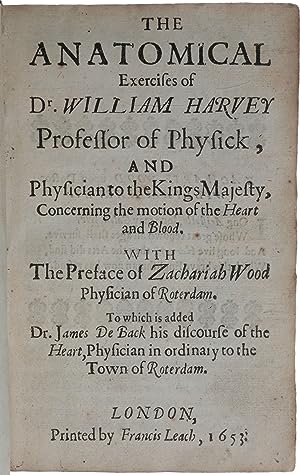
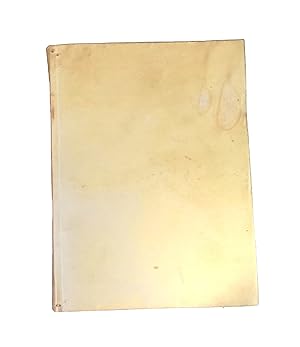
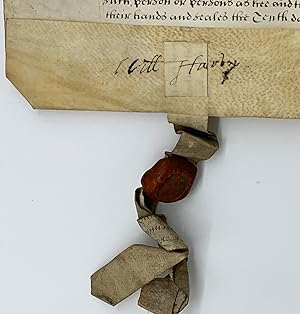
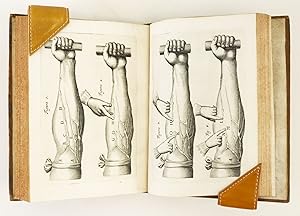
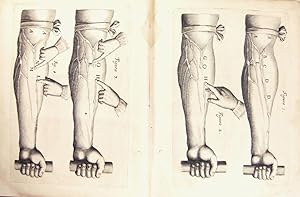
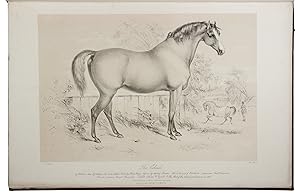

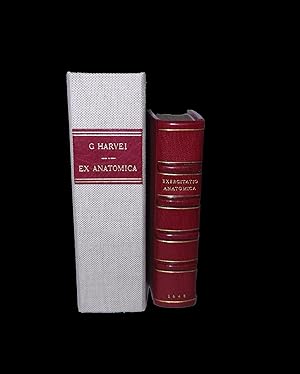
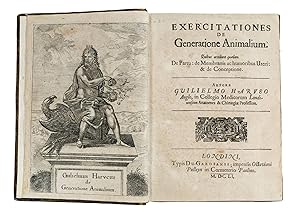
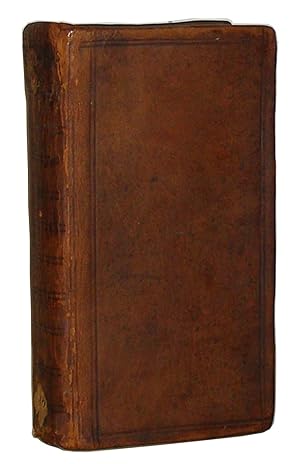
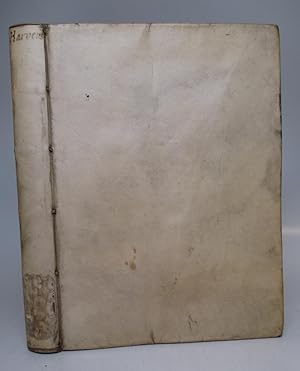
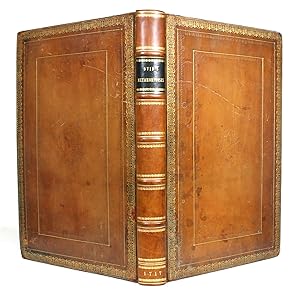
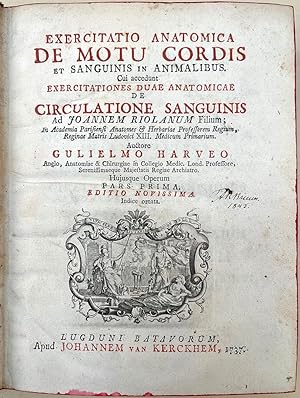
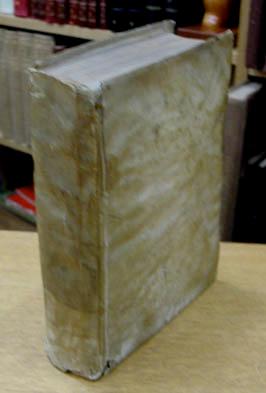
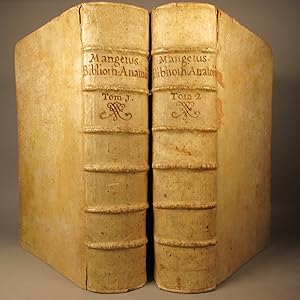
![Immagine del venditore per The Red and black, Central High School, St. Louis Missouri, Volume XVI January and June 1933 [Yet all experience is an Arch wherethro' gleams that untravell'd world, whose margin fades for ever, and for ever when I move'][Subject: Eero Saarinen Gateway Arch Psychic Precognitive Painting] venduto da Joseph Valles - Books](https://pictures.abebooks.com/inventory/md/md22479506638.jpg)
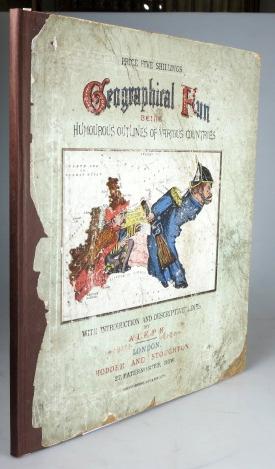
![Immagine del venditore per [THE ADDRESS OF THE INHABITANTS OF ALEXANDRIA, IN VIRGINIA TO GENERAL WASHINGTON, ON LEAVING HIS HOUSE TO ACCEPT OF THE PRESIDENCY OF THE UNITED STATES OF AMERICA [Never Before Printed.] [with,] THE Address of GENERAL WASHINGTON TO THE MAYOR, CORPORATION AND CITIZENS OF ALEXANDRIA. [In,] THE UNIVERSAL MAGAZINE OF KNOWLEDGE AND PLEASURE. And Other Arts and Sciences Which May Render it Instructive and Entertaining. FOR JANUARY, 1790 [Through] JUNE, 1790. VOL. LXXXVI venduto da Buddenbrooks, Inc.](https://pictures.abebooks.com/inventory/md/md30895979332.jpg)
